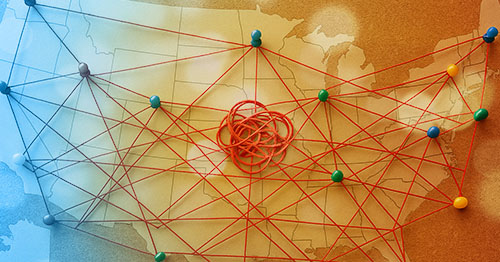
AI Isn’t One Tool—It’s an Entire Toolbox for eDiscovery
August 21, 2025
By:
Summary: AI is changing eDiscovery, but it’s not a single solution. It’s a toolbox of powerful tools. Discover how the right mix of models and expertise can transform your approach.
We’ve been hearing it more and more: “AI is the new TAR.” And at a high level, it’s easy to see why that comparison is being made. Both represent major advancements in eDiscovery technology. But to equate them is to miss a crucial distinction.
TAR was built for one problem. AI solves many.
TAR was developed to tackle a very specific challenge in eDiscovery: reviewing large volumes of documents for relevance. While some practitioners have adapted TAR workflows for other purposes, these adaptations often require significant workarounds and often with compromises in output quality.
By contrast, large language models (LLMs), particularly generative ones, enable a completely different approach. They empower eDiscovery providers to develop a wide range of tools, each custom-built to address a specific challenge within eDiscovery. Examples of LLM use include classifying documents (like TAR), assigning issue codes, drafting privilege descriptions, and more.
AI is not one thing
LLMs themselves are not a single technology. AI is a class of technologies that includes many different types of models: encoders (used for predictive tasks), decoders (used for generative tasks), and hybrids.

And those models are just the foundational layer of an AI solution. It takes more than a model and a prompt to create a solution. When you put the different models, approaches, prompts, post-AI refinement, and workflows into account, the options are nearly endless.
So instead of asking, “Do you have AI?”, the more relevant question becomes: “What are you doing with AI?”
The human roles remain key
As with TAR, human involvement is essential. Whether an AI solution is tailored through training the underlying model or by crafting a prompt, people play a critical role in shaping and guiding the output.
Equally important are the validation processes built into AI workflows. Rigorous human review—both at the testing stage and through statistically significant sampling of final results—is vital to confirming accuracy, ensuring defensibility, and unlocking AI’s full value.
The real power lies in purpose-fit solutions
With such a broad range of AI solutions available, we now have the flexibility to choose the right solution for each specific eDiscovery task, whether it’s classification, summarization, translation, or entity recognition. And when we layer these capabilities on top of the analytics already embedded in modern review platforms, the possibilities multiply.
But with so many options, the complexity can quickly become overwhelming.
That’s why the right partner matters
You don’t have to be an AI expert to take advantage of AI. Keeping up with new models, and evaluating the types of analysis they excel at and how they compare to others, is highly technical and time-consuming. A trusted eDiscovery partner can help you make sense of the options, recommending purpose-fit models and integrating them into defensible, efficient workflows.
As a partner to top Fortune companies and Am Law firms, we’ve created a framework to help legal teams evaluate potential AI solutions with clarity and precision.
AI isn’t a magic bullet but a powerful engine
AI isn’t a silver bullet or a single solution to every problem. It’s a powerful class of tools that, when paired strategically with human expertise and existing technologies, both AI and non-AI, can drive smarter, faster, and more effective eDiscovery workflows.
Curious about how Lighthouse is putting AI to work in eDiscovery? Explore our approach and see how purpose-fit AI solutions can transform your workflows. Visit our AI page.








